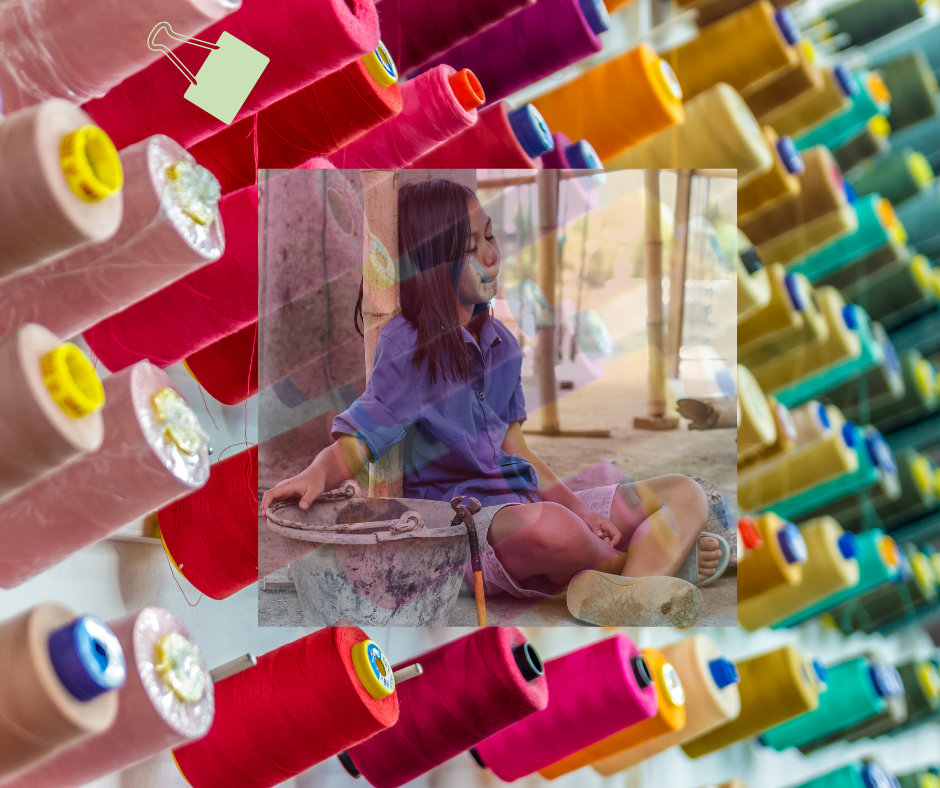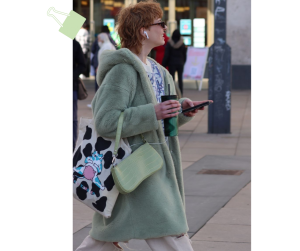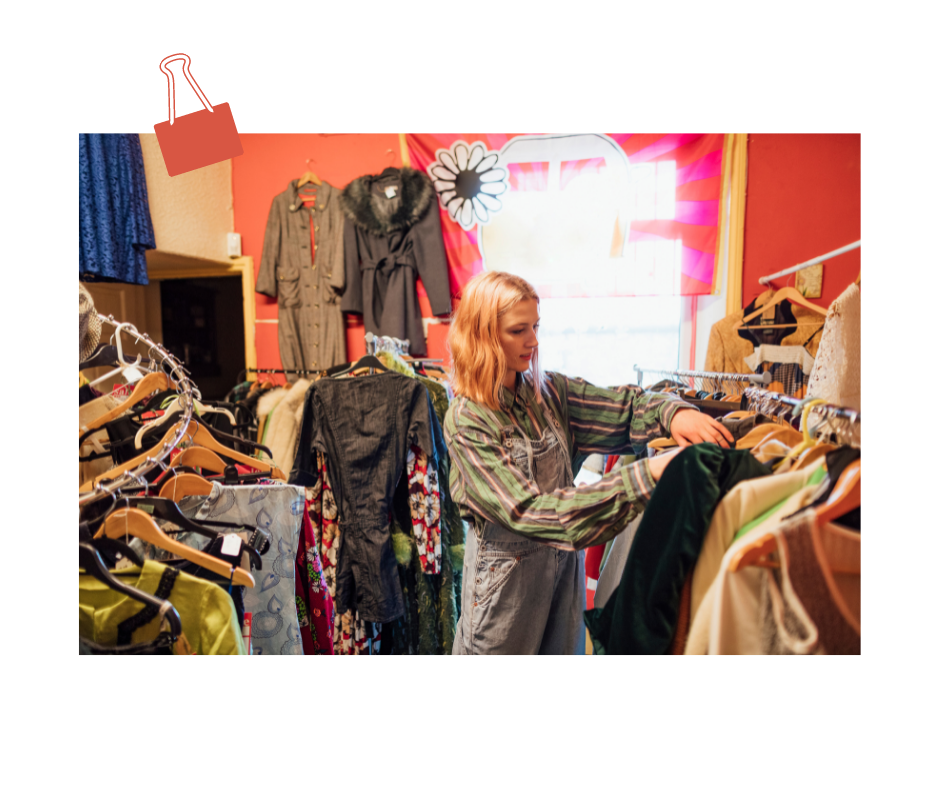Sustainable fashion is a practice of sustainable lifestyle, which also needs to be experienced in everyday life. In other words, it is a movement that promotes changes in consumer behaviour and also in fashion production toward greater ecological integrity and social justice.
In effect, sustainable fashion is about much more than methodology, fabrics, and production. It comprises the approach of the entire fashion system.
Are you into fashion and style, but also concerned about current fashion industry practices?
Are you looking for humane and sustainable alternative options without compromising your look?
Great! So let’s get together and try to understand the main problems of the fashion industry in terms of environmental and human impact, and find lasting solutions to improve our shopping habits.
Page Content
What is sustainable fashion?
Sustainable fashion is a trend that is concerned with using methods that do not produce or minimize environmental impacts generated in the product development process.
Just like sustainable travel, it arose from the need to rethink our society’s conduct, from an ecological point of view. In other words, from the fabric production stage to the unbridled consumption and disposal of used pieces, mankind has extracted a large amount of non-renewable natural resources, polluted and degraded nature, without caring about the consequences of this.
Sad, isn’t it? That is why sustainable fashion advocates the reduction of the use of polluting materials in the production of its garments. Thanks to this, it minimizes impacts on the environment.
Therefore, the consumer of conscious fashion is the one who seeks products with sustainable materials, quality, and greater durability, both in clothes and accessories.
What is fashionable?
The concern with what is fashionable leads to accelerated consumption of clothes, because they need to be replaced each season every year. This insane behaviour has left big marks on the environment. For example the degradation of the planet and the consumption of large amounts of non-renewable raw materials.
According to the Environmental Protection Agency, the textile industry is among the four industries that consume the most natural resources and pollute the most. In addition, this system fosters sociocultural inequality.
Also according to the environmental education movement, Less One Trash, the fashion industry is the second most polluting industry in the world. Each year, 93 trillion litres of water are used for the production of clothing, which corresponds to 4% of the world’s annual freshwater withdrawal. For the production of one kilogram of cotton fibre, seven to 29,000 litres of water are needed.
So what do you think? Are fashion and environmental preservation conflicting concepts?
Because fashion, apart from the “classics”, has short life cycles. In opposition are the durability, sustainability, and reuse of products.
What's wrong with today's fashion industry?

The drop in clothing prices over the last 20 years has allowed us to buy more and more clothes. We now have at least 5 times more clothes than our grandparents had. We felt pretty good until we discovered what was hiding behind this trend.
In reality, this continuous accumulation of cheap clothes is only possible due to a constant reduction in production costs. This in turn has serious consequences for our health, our planet, and the lives of garment workers.
Working conditions in the fashion industry
We have known this for decades: most of our clothes are made in countries where workers’ rights are limited or non-existent. In fact, production sites are regularly relocating in search of ever-cheaper labour costs.
We often hear company owners say that “for these workers, it’s better than nothing,” “at least we give them a job,” and to some extent they are right. On the other hand, it is also correct to say that they are exploiting the misery and taking advantage of the poor populations. That is, who have no choice but to work for any pay, under any working conditions.
Even the European Parliament is using the term “slave labour” to describe the current working conditions of garment workers in Asia.
We know that if working conditions improve in one country, companies will simply move to another. As a result, we cannot expect much from the corporate world or from governments unless consumers push for change.
Wages in the fashion industry
Many fashion brands assure their customers that the workers who make their clothes are paid “at least the legal minimum wage.” But what does this mean exactly?
First of all, it means that many other brands don’t even pay the legal minimum wage!
Furthermore, in most manufacturing countries (China, Bangladesh, India…), the minimum wage represents between half and one-fifth of the living wage. A minimum wage represents the minimum a family needs to meet its basic needs (food, rent, health, education, etc.). So, in summary, these brands boast of paying their employees 5 times less than what a person really needs to live with dignity…
Why is sustainable fashion important?
As you already know, sustainable fashion refers to garments that have been made in a way that is mindful of the many environmental issues surrounding the fashion industry. In addition, they are garments that are made to last.
Quality reduces waste. Sustainable brands focus on quality, using materials and finishes that are made to last, as well as being kind to the environment.
By choosing sustainable brands that provide quality, you can reduce your waste, as well as the amount of clothing you buy. In other words, you will still save money.
Sustainable wardrobe
If you’re the type who likes to follow trends, the idea of creating a sustainable closet from scratch is definitely a scary idea.
There is the prospect of not being able to wear the usual brands, and of limiting your choices in terms of trends.
All of these concerns are valid, of course, but it’s not as hard as you might think to start with a sustainable closet – and it’s definitely worth it in the long run.

Research the brand you buy
When you wear a brand, you are not just buying the beauty of the garment, you are legitimizing its entire production process and carrying the moral value of the company.
If the store you buy from uses slave or child labour in its manufacturing and disposes of harmful chemical waste incorrectly in the environment, you are feeding these practices.
So in some situations, consumers have the power to support or punish brands for their social and environmental attitudes, and this comes through in their choice of which store to buy from. For this, it is essential to inform yourself about the products that the manufacturer uses. If you want to become a sustainable consumer, you should research the circumstances under which clothes are produced.
Today everything is much simpler. We can find information and even use social media to talk quickly and directly to the brands.
When making such a special purchase, you want to be sure that you are buying from a brand that aligns with your values.
The second-hand store is part of sustainable fashion

I love to search for wonderful pieces in a second-hand store. It is an art. Did you know that? Here in Europe people love to go to thrift stores. And people from all social classes. It’s silly to be prejudiced against second-hand.
Every new item of clothing manufactured has a substantial carbon footprint connected to its manufacture, but the amount of new energy required to produce vintage clothing is zero.
Emma Watson said, “Vintage clothing has a huge role to play in making fashion more sustainable and reducing a global footprint that includes the 132 million metric tons of coal used annually through the production of new fibers, dyeing and bleaching of clothing, and the 6-9 trillion gallons of water used by the industry.”
In other words, the solution is not only to produce new garments from recyclable products, but also, to consume products that have already been used by other people. Following this thought, thrift stores are modernizing themselves and encouraging conscious consumption.
Is Zara sustainable?
Zara lags far behind the truly sustainable brands. Their “sustainable” clothing is such a small portion of their products that it is impossible for them to make significant changes. In addition, they are also still promoting mass consumerism that feeds on fast fashion and is inherently unsustainable.
Test of the 30 times using
The purpose of this test is for you to buy only products that you will actually use a lot.
It works like this: every time you go to buy something, ask yourself sincerely, “Will I use this at least 30 times?”
If the answer is no, run out and forget about the useless purchase. You will be surprised how often your answer is no. Honestly, try to avoid buying that one piece that you know you will only wear for one occasion. Instead, invest in something with more longevity that you can wear again and again. Choose more versatile pieces that can be styled in different ways, rather than an item that you know will go out of style in a short time.
I particularly like clothes that I can wear 30,000 times.
Measures for sustainable fashion
Many are the measures that can be employed to reduce social and environmental impacts in the fashion industry. There are numerous processes and moments of decision in front of which a brand adopts its positioning and can invest in the paradigm of sustainable development.
In manufacturing, the company can decide to increase the life span of a piece of clothing through finishing, it can use fabrics that cause less environmental impact, verify the origin of raw materials, ensure decent working conditions, as well as perform upcycling.
It is up to the brands and consumers to decide on an ethical fashion positioning.
It is up to us to decide what and how to consume. In other words, if you want to adopt conscious consumption, you will, besides valuing and opting for sustainably produced pieces, also adopt other important attitudes, such as buying less, investing in durable pieces, repairing damaged pieces, donating, exchanging, sharing, and customized pieces.
Adopt a lighter life in every way.
Read also about light packing.












One Response